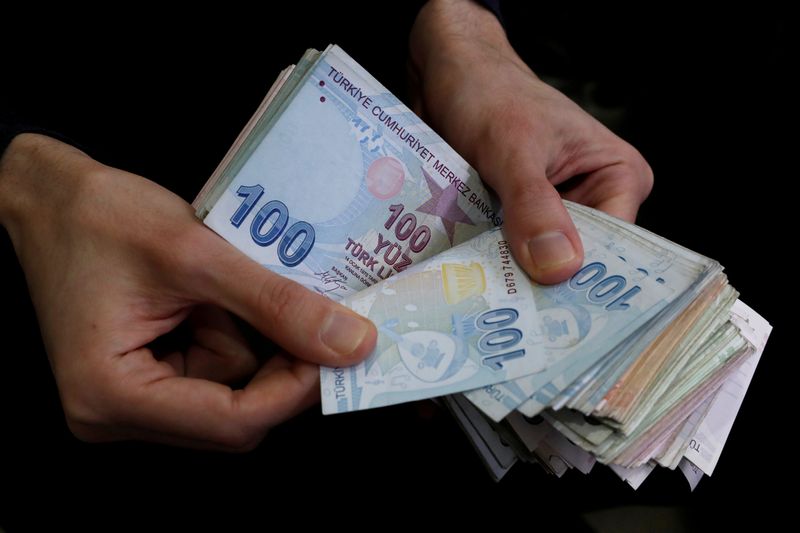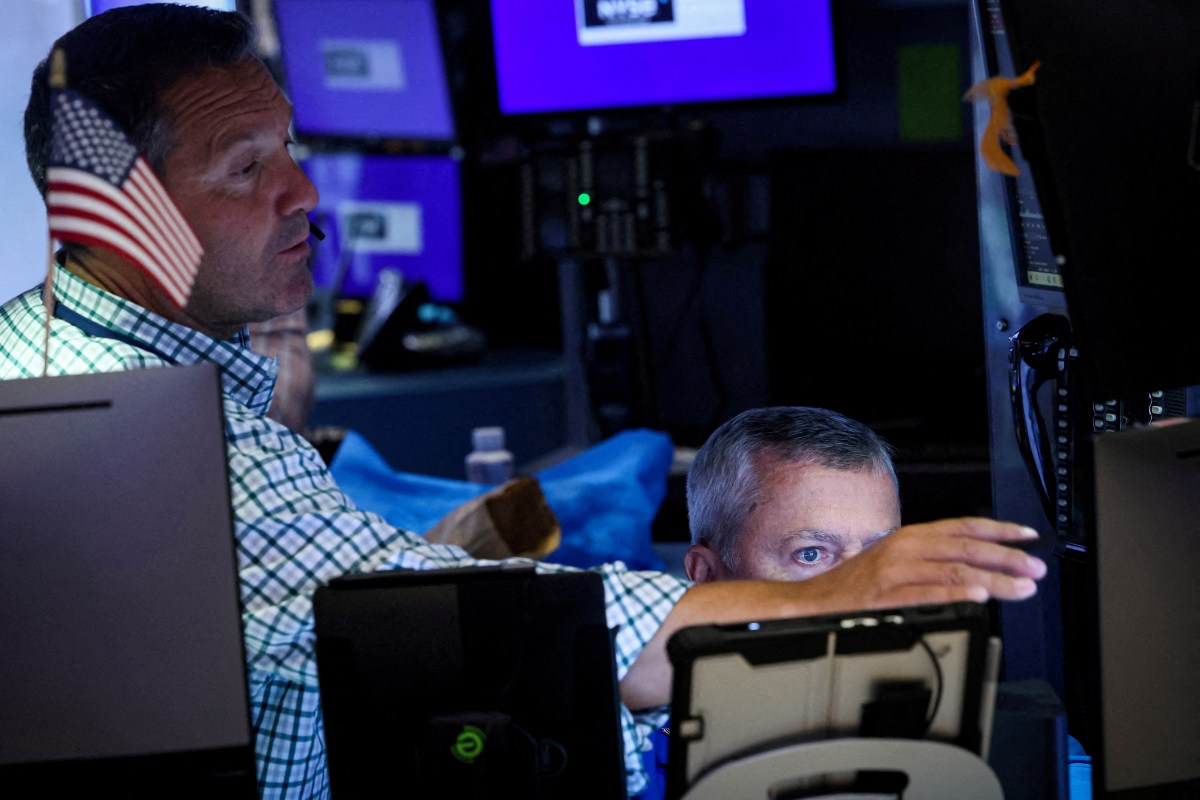LONDON (Reuters) – Turkey’s two new economic czars will need a fresh crisis playbook if they are to keep the lira and the economy from plunging into deeper turmoil.
The shock departure of finance minister Berat Albayrak, who is President Tayyip Erdogan’s son-in-law, and central bank chief Murat Uysal over the weekend gave the lira its best day in over two years on Monday.
Investors hope their successors will deliver another of the country’s pirouettes, where long-suppressed interest rates are lifted dramatically, providing the currency with some much-needed relief.
Newly-installed central back governor Naci Agbal said he would zero in on inflation, and financial markets now expect a hike of anything between 200 and 600 basis points at the bank’s policy meeting on Nov. 19. With the stakes so high, the central bank can ill afford any policy move to be misjudged.
Turkey, the largest economy in the Middle East and the 20th biggest in the world, has been hit by two sharp contractions in as many years and its currency has shed some 45% since mid-2018.
In contrast to previous episodes of lira turmoil, the central bank is estimated to have burnt through more than $100 billion of reserves this year, leaving it effectively around $36 billion overdrawn on those reserves, according to UBS.
The central bank has not commented on analysis suggesting its reserves are ‘net’ negative, though it has said its buffers fluctuate naturally in times of stress.
UBS’s head of emerging market strategy Manik Narain said the weekend’s changes of top personnel had “arguably given hope”. He thinks a 350 basis points hike is now needed, but is wary that it might just prove to be a sticking plaster.
“Frankly we are in unprecedented territory,” he said, referring to the central bank’s net negative reserves which are funded by dollar savings parked in banks. “We don’t know how this movie ends, we haven’t seen anything like this before”.
(GRAPHIC: Lira has slumped over 60% in recent years – https://fingfx.thomsonreuters.com/gfx/mkt/yzdvxkynmpx/Pasted%20image%201604936724727.png)
WARNING SIGNS
The warning sirens have long been sounding.
As well as the lira’s plunge, international investors have reduced their holdings of Turkish bonds and equities by almost $120 billion over the last four years, Deutsche Bank estimates.
Turks and businesses in the country have also increasingly been converting their lira into dollars and euros. Dollarization of the domestic deposit base is now above 60%, but the real risk is if money starts being pulled out of the banks altogether.
“We would be particularly concerned if evidence emerged of dollar deposits being sent offshore,” Deutsche’s Christian Wietoska and Oliver Harvey said, stressing there were no signs of any mass move yet.
“In short, we believe two things are needed: aggressive monetary policy tightening – the sooner, the better – and a strong verbal commitment from the central bank and government to reduce inflationary pressure.”
Inflation has held near 12% all year – well above a target of around 5% – and in his first comments as governor, Agbal said the central bank “will decisively use all policy tools in pursuit of its price stability objective.”
(GRAPHIC: Turkey interest and inflation rates – https://fingfx.thomsonreuters.com/gfx/mkt/ygdvzbrwrvw/Turkey%20interest%20rates%20and%20inflation.PNG)
NOT OUT OF THE WOODS
In 2018, interest rates reached 24%, or about seven percentage points above where inflation was at the time, before the lira stabilised.
This time, however, the reserves are depleted and Turkey saw one of its worst ever economic slumps in the second quarter due to the effects of the coronavirus.
A wide external deficit of -4.9% of GDP is forecast this year, compounded by a 75% plunge in tourism inflows in January-August from a year earlier.
Central bank data shows the government and companies need to refinance a combined $181 billion over the next 12 months.
That equates to just over a quarter of Turkey’s $700 billion GDP, says Societe Generale’s Phoenix Kalen. With only $42.2 billion in ‘gross’ FX reserves – which differ from net reserves as they don’t account for FX swaps – the so-called “coverage ratio” for Turkey is one of the lowest of any emerging market economy, said Kalen.
Refet Gurkaynak, an economics professor at Bilkent University in Ankara said Turkish authorities can’t afford to hold back. Without a big hike next week, he said, “the carnage would be unreal” for the lira.
Kieran Curtis, a portfolio manager at Aberdeen Standard Investments, said Turkey would also “run into difficulty very quickly if it reverts to the playbook of raising rates but then reducing them again as quickly as it thinks it can.”
He estimated it could take nine months to know if things had really changed and said the central bank needed to rebuild its buffers.
“Without dollar purchases (to bolster reserves), I don’t think the lira can be considered to be out of the woods.”
(GRAPHIC: Turkey’s covert policy tightening – https://graphics.reuters.com/TURKEY-CENBANK/RATES/yzdpxaboxvx/chart.png)
(GRAPHIC: Forex held by Turkish locals – https://fingfx.thomsonreuters.com/gfx/mkt/xlbvgwkmkvq/Forex%20held%20by%20Turkish%20locals.PNG
0
(Additional graphics by Ali Kucukgocmen in Istanbul and Karin Strohecker in London; Editing by Susan Fenton)






















